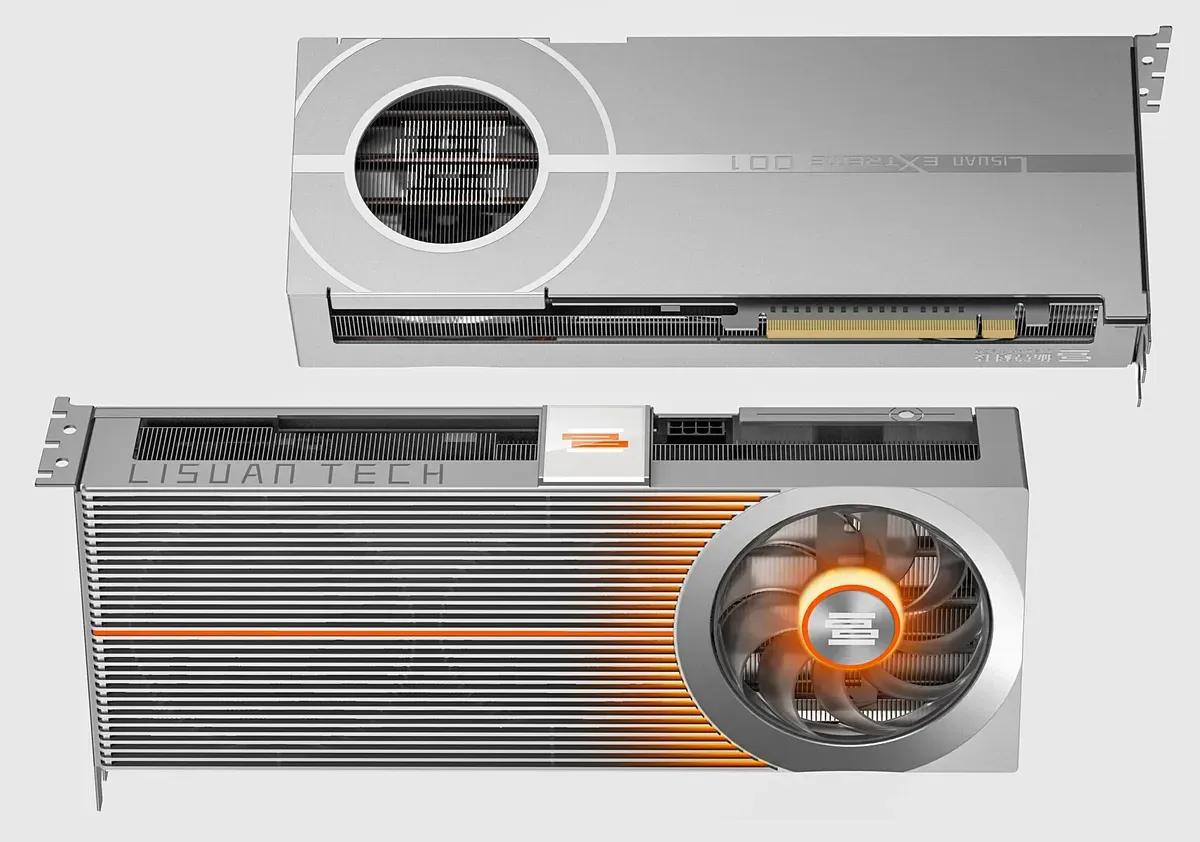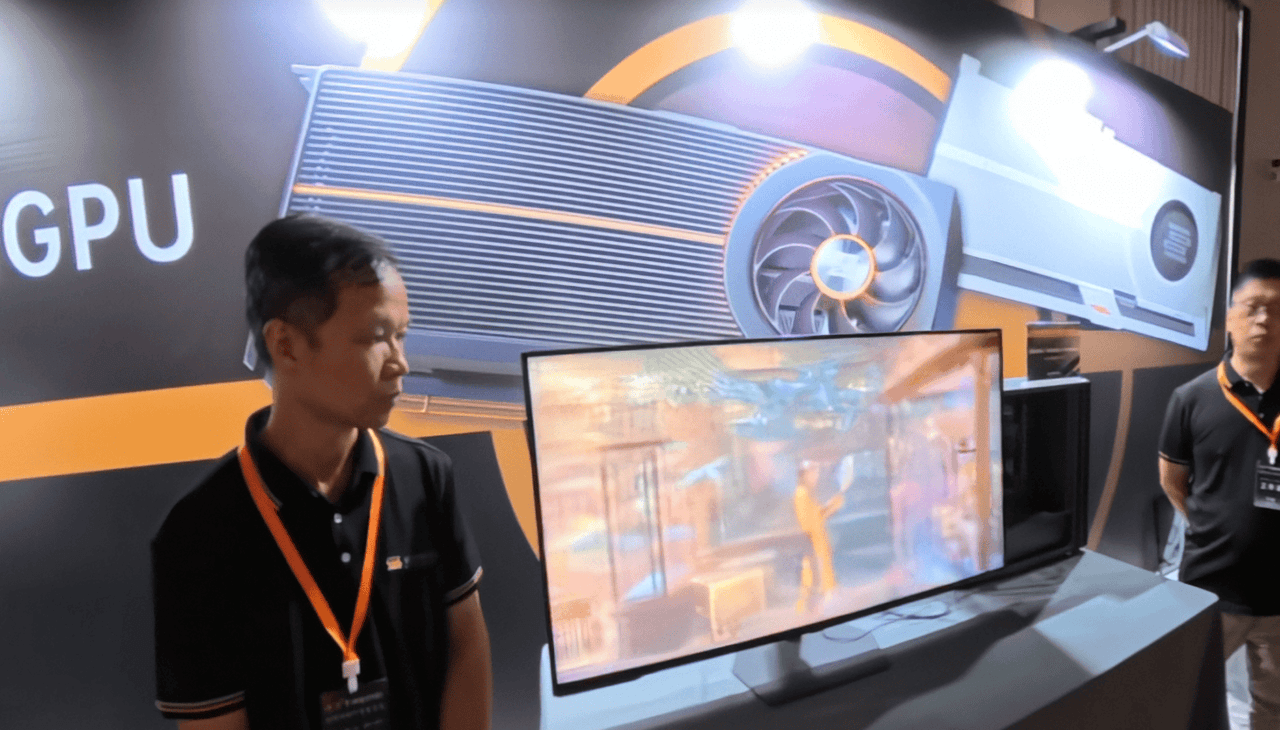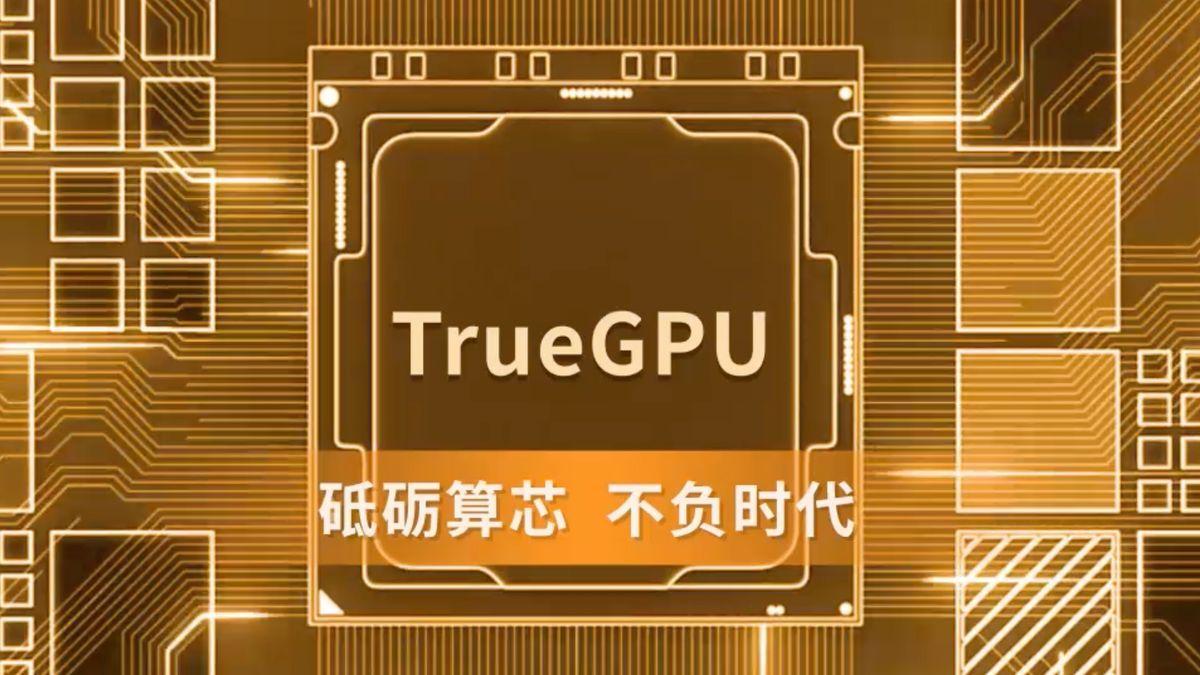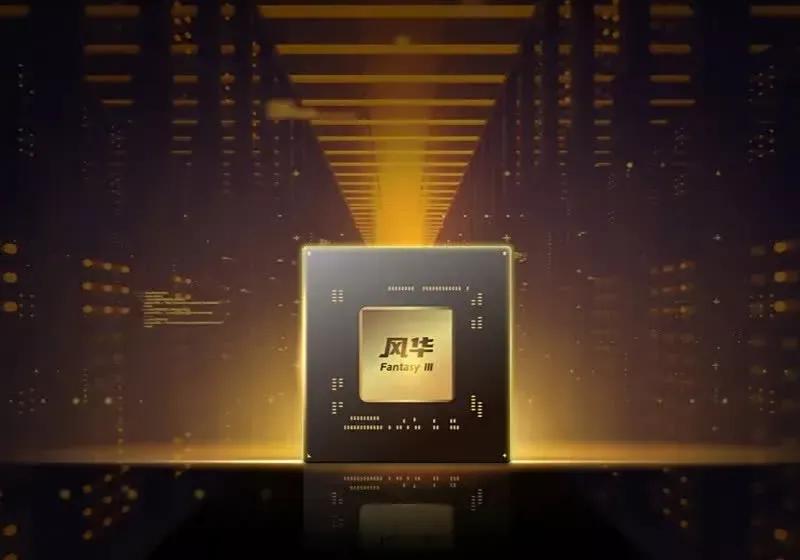China's Lisuan Tech Unveils Homegrown 6nm GPUs for Gaming and AI, Challenging Global Competitors
2 Sources
2 Sources
[1]
China advances toward tech independence with new homegrown 6nm gaming and AI GPUs -- Lisuan 7G106 runs Chinese AAA titles at 4K over 70 FPS and matches RTX 4060 in synthetic benchmarks
As ITHome reported, China is pushing its domestic GPU efforts into uncharted territory with Lisuan Tech's first consumer and professional graphics cards, the 7G106 and 7G105. Built on TSMC's 6nm N6 process, the 7G106 and 7G105 are powered by the company's in-house TrueGPU architecture and aim to compete directly with mid-range offerings from Nvidia and AMD. While the spotlight is on gaming performance, Lisuan is positioning these chips as multi-purpose accelerators for AI, cloud rendering, and even metaverse applications. The consumer-focused 7G106 features 12 GB of GDDR6 memory on a 192-bit bus, 192 texture units, 96 ROPs, and an FP32 throughput of up to 24 TFLOP/s. It features four DisplayPort 1.4 outputs with DSC 1.2b compression and supports DirectX 12 (minus ray tracing), Vulkan 1.3, OpenGL 4.6, and OpenCL 3.0. Its single 8-pin PCIe connector also suggests a TDP of around 225W. On the other hand, the professional 7G105 doubles memory to 24 GB with ECC, offering up to 192 GB/s of pixel fill rate, 384 GB/s of texture fill rate, and the same 24 TFLOP/s compute ceiling. Both cards include hardware-accelerated AV1 and HEVC decode up to 8K60 and encode capabilities at 8K30 for HEVC and 4K30 for AV1. What sets Lisuan apart from past Chinese GPU attempts is its claim of building the TrueGPU architecture from scratch, including the instruction set, compute core, and software stack. The company touts "intelligent multitasking" with up to 48 concurrent tasks, out-of-order triangle rendering for 50% faster efficiency in certain scenes, and dual FP32/INT32 instruction emission. There's also a unique matrix memory layout designed to boost memory efficiency by 40%, along with dynamic load balancing that distributes rendering and compute tasks across cores in real time. Lisuan even claims NRSS, a proprietary rendering quality optimization system designed to rival Nvidia DLSS and AMD FSR. Benchmark results paint a mixed but promising picture. In synthetic tests, the 7G106 scored 26,800 points in 3DMark Fire Strike and 2,256 in Steel Nomad, putting it roughly on par with Nvidia's RTX 4060 in Fire Strike. Geekbench 6 OpenCL saw it notch 111,290 points, edging out the RTX 4060 by around 10%. Gaming demos were equally noteworthy: Black Myth: Wukong and Wuchang: Fallen Feathers both ran at over 70 FPS in 4K High settings, while Shadow of the Tomb Raider topped 80 FPS under similar conditions. High-profile titles like these running on a GPU architecture in its infancy paint a very positive picture for the platform's stability, more so than raw performance numbers. The 7G105 professional variant leans heavily on AI and enterprise markets, supporting SR-IOV virtualization with up to 16 containers. Lisuan highlights its applicability for cloud gaming, digital twins, virtual reality, and even robotics. The company claims its eXtreme series cards are ready to handle large AI models such as DeepSeek and Wenshengtu, extending their utility beyond traditional PC gaming. Lisuan's announcement marks a new phase for China's domestic GPU ambitions. While past efforts, such as Zhaoxin's integrated solutions and Moore Threads' early discrete GPUs, struggled to break into the mainstream, Lisuan's 6nm designs represent a bold attempt to close the gap with global players. If its claims of architectural independence and performance parity hold up under independent testing, this could be the first time a Chinese GPU maker truly competes with AMD and Nvidia in the discrete GPU space. Mass production of the Lisuan 7G106 and 7G105 is expected to begin in September 2025, following sampling in August. Pricing and final clock speeds are yet to be announced. Still, Lisuan's domestic-first strategy could make these cards a viable alternative for Chinese gamers and enterprises facing rising costs and export restrictions.
[2]
China Launches Its First 6nm GPUs For Gaming & AI, the Lisuan 7G106 12 GB & 7G105 24 GB, Up To 24 TFLOPs, Faster Than RTX 4060 In Synthetic Benchmarks & Even Runs Black Myth Wukong at 4K High With Playable FPS
China has introduced its first 6nm gaming and AI GPUs, the Lisuan Tech 7G106 & 7G105, with up to 24 GB memory, and faster than RTX 4060 performance. China Makes Big Gains In The Gaming & AI GPU Segment WIth Lisuan Tech's G100 Chip, Powering the 7G106 12 GB & 7G105 24 GB Graphics Cards A few days ago, we reported about the Lisuan G100 GPU and how it outperformed the NVIDIA RTX 4060 while coming in striking distance of the RTX 5060 in synthetic benchmarks. Now, Lisuan Tech, has officially launched its first G100 GPU based graphics cards, the 7G106 and the 7G105. Starting with the specifications, we first have the consumer-aimed gaming graphics cards which is called the 7G106. This graphics card features 12 GB of GDDR6 memory across a 192-bit bus interface, and PCIe 4.0 x16 compliancy. The graphics card comes with a total of 192 TMUs, 96 ROPs, and has a maximum TDP of 225W, powered by a single 8-pin connector. In terms of design, the graphics card will come in a triple-slot form factor and feature a single-fan flow-through design. The graphics card features four DisplayPort 1.4a outputs, supports up to 8K60Hz HDR Freesync functionality with HEVC 8K@60FPS Encode and 30FPS Decode. It also supports all modern APIs such as DX12, Vulkan 1.3, OpenGL 4.6, and OpenCL 3.0. The second card is the Lisuan Tech 7G105 which is aimed at the professional/AI segment. This card has the same chip but gets 24 GB of GDDR6 memory with ECC support. It offers up to 192 GP/s, 384 GT/s & 24 TFLOPs of FP32 compute. The card can run up to 16 1080p screens at 60 FPS in virtual environment. Being a PRO variant, it comes with modern data security, data encryption, and confidential computing support. As for performance, the 7G106 was once again demonstrated in synthetic benchmarks. They did quote the chart that we made, showcasing the Geekbench OpenCL performance, but in addition to that, the 3DMark Firestrike benchmark was also tested in which it scored 26,800 points, once again outperforming the NVIDIA GeForce RTX 4060 which scores around 24K points, while the RTX 5060 ends up close to 30K points. Besides the synthetic performance, Lisuan Tech also had demo units where they were running Black Myth Wukong at 4K (High Settings). The game was running at a very playable FPS, but the actual FPS were not shown. The company has yet to confirm the clock speeds, pricing, and availability of the cards but this is definitely a major leap for China's domestic GPU segment.
Share
Share
Copy Link
Lisuan Tech introduces the 7G106 and 7G105 GPUs, built on TSMC's 6nm process, aiming to compete with mid-range offerings from Nvidia and AMD in gaming and AI applications.
China's Leap in GPU Technology
Lisuan Tech, a Chinese company, has unveiled its first consumer and professional graphics cards, the 7G106 and 7G105, marking a significant step towards China's technological independence in the GPU market
1
2
. Built on TSMC's 6nm N6 process, these GPUs are powered by Lisuan's in-house TrueGPU architecture and aim to compete directly with mid-range offerings from global giants like Nvidia and AMD.
Source: Tom's Hardware
Technical Specifications and Performance
The consumer-focused 7G106 boasts impressive specifications:
- 12 GB of GDDR6 memory on a 192-bit bus
- 192 texture units and 96 ROPs
- FP32 throughput of up to 24 TFLOP/s
- Support for DirectX 12, Vulkan 1.3, OpenGL 4.6, and OpenCL 3.0
- TDP of around 225W
The professional 7G105 variant doubles the memory to 24 GB with ECC support and offers enhanced capabilities for AI and enterprise markets
1
.In synthetic benchmarks, the 7G106 has shown promising results:
- 26,800 points in 3DMark Fire Strike, comparable to Nvidia's RTX 4060
- 111,290 points in Geekbench 6 OpenCL, slightly outperforming the RTX 4060
1
2
Gaming and AI Capabilities

Source: Wccftech
Lisuan's GPUs have demonstrated impressive gaming performance:
- Black Myth: Wukong and Wuchang: Fallen Feathers ran at over 70 FPS in 4K High settings
- Shadow of the Tomb Raider topped 80 FPS under similar conditions
1
The 7G105 professional variant supports SR-IOV virtualization with up to 16 containers, making it suitable for cloud gaming, digital twins, virtual reality, and robotics. Lisuan claims these cards can handle large AI models such as DeepSeek and Wenshengtu
1
.Related Stories
Unique Architectural Features
Lisuan's TrueGPU architecture boasts several innovative features:
- "Intelligent multitasking" with up to 48 concurrent tasks
- Out-of-order triangle rendering for 50% faster efficiency in certain scenes
- Dual FP32/INT32 instruction emission
- A unique matrix memory layout designed to boost memory efficiency by 40%
- Dynamic load balancing for real-time distribution of rendering and compute tasks
- NRSS, a proprietary rendering quality optimization system to rival Nvidia DLSS and AMD FSR
1
Market Implications and Future Outlook
This development represents a new phase in China's domestic GPU ambitions. While previous efforts struggled to break into the mainstream, Lisuan's 6nm designs show potential to close the gap with global players
1
.Mass production of the Lisuan 7G106 and 7G105 is expected to begin in September 2025, following sampling in August. Pricing and final clock speeds are yet to be announced
1
2
.Lisuan's domestic-first strategy could make these cards a viable alternative for Chinese gamers and enterprises, especially in light of rising costs and export restrictions. If the claims of architectural independence and performance parity hold up under independent testing, this could mark the first time a Chinese GPU maker truly competes with AMD and Nvidia in the discrete GPU space
1
.References
Summarized by
Navi
Related Stories
Recent Highlights
1
Google launches Gemini 3 Flash as default AI model, delivering speed with Pro-grade reasoning
Technology

2
OpenAI launches GPT Image 1.5 as AI image generator war with Google intensifies
Technology

3
OpenAI launches ChatGPT app store, opening doors for third-party developers to build AI-powered apps
Technology








